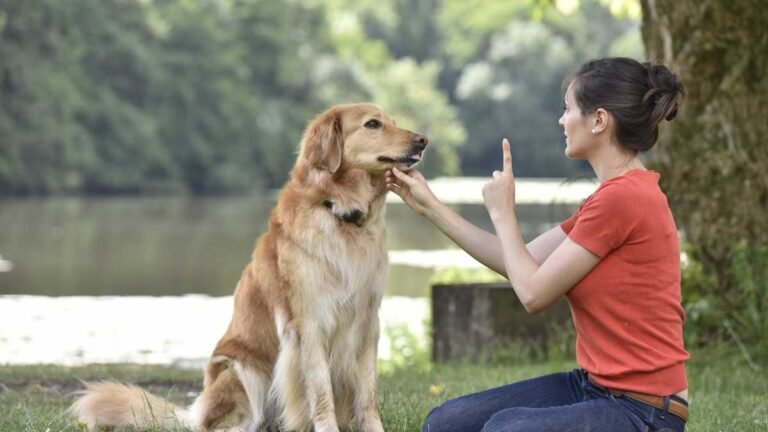Top 8 Dogs Training Tips: Effective Techniques for Obedience and Good Behavior
Top 8 Dogs Training Tips: Among the most fulfilling experiences a pet owner can have is training their animal. Whether your pet is a rowdy rabbit, an inquisitive cat, or a lively puppy, a harmonic connection depends on your teaching your pet obedience and good behaviour. Good training guarantees that your pet knows your expectations, therefore simplifying your life together. This page describes efficient methods to help you teach your pet excellent behaviour and obedience.
1. Start with Basic Commands
Any effective training program’s basis is an instruction in fundamental commands such as “sit,” “stay,” “come,” and “down.” Not only are dogs suited for these orders; but other animals, including cats, may also choose them by constancy and patience. Starting one command at a time, thank your pet for following the command correctly with goodies, compliments, or playtime. Short training sessions—between 10 and 15 minutes—help you to keep your pet’s attention and prevent frustration.
2. Consistency is Key
Training your dog requires consistency. For every directive, use the same words, tone, and hand gestures to prevent confusing your pet. Everybody living in the house should agree and apply the same orders and approaches. Your pet will learn what is expected of them by this constancy, therefore supporting good behaviour and obedience.
3. Positive Reinforcement
Among the most powerful tools for instruction is positive reinforcement. Under this method, your pet will be rewarded for positive behaviour and urged to carry on the intended behaviours. Rewards could be snacks, words of thanks, stroking, or playing. The secret is to give your pet rewards right away following the desired behaviour so they come to link the reward with the activity. This approach enables your pet’s behaviour to be shaped over time, increasing their likelihood of responding to directions and acting politely.
4. Avoid Punishment
While positive reinforcement is effective, punishing your pet may impede its development. In dogs, punishment—physical corrections or yelling—may generate anxiety, fear, and even aggression. Instead of punishing undesired conduct, try diverting your pet’s attention towards a positive action. If your dog chews on furniture, for example, guide them to a chew toy and commend them for using it.
5. Socialization
Especially for dogs, training depends considerably on socialising. Your pet will become less anxious and more confident if you expose it to diverse environments, people, and other animals. Early socialisation can assist in preventing hostility and anxiety as well as behavioural disorders. Start by gradually exposing your pet to new environments where every encounter makes sense and fulfils her.
6. Use of Clicker Training
Popular and effective “clicker training” uses a small, portable gadget that clicks when pressed. After marking the precise time your pet exhibits the intended behaviour, a reward follows. This approach enables exact communication with your pet, therefore guiding their understanding of which activities are rewarded. Teaching difficult behaviours and skills calls especially for click-through instruction.
7. Patience and Persistence
Training your pet calls for tenacity and endurance. Sometimes progress is gradual; setbacks are natural. Throughout training, keep a cool head and have a good attitude. Take a break and try once again later if your pet looks bored or annoyed. Remember that every pet picks things at their speed; hence, be patient and acknowledge little accomplishments as you go.
8. Seek Professional Help if Needed
Seeking expert advice can be helpful whether your pet exhibits particular behavioural problems or if you find yourself struggling with training. Expert trainers may offer specific advice and methods catered to your pet’s needs. They may also assist with more difficult behaviours, therefore making sure your pet grows to be a disciplined and compliant friend.
Conclusion
Top 8 Dogs Training Tips: Teaching your pet is a continuous process that needs time, effort, and consistency. Positive reinforcement, patience, and consistency will help you teach your pet obedience and good behaviour, therefore improving the bond. Training may be a fun experience for your pet and you both depend on the correct methods, thereby enhancing the link you two have.
Thanks for Reading
Dogs Training Tips

